Art News and Updates from Gallereo
All the latest news from the art world, as well as what's happening here at Gallereo. If you've built a gallery at Gallereo, let us know about your experience and you and your site could feature in our blog in the coming weeks.
Saturday 10th May 2014Choosing the Right Monitor

For many artists working in the various digital media, there is one thing they can't live without - a good computer! For some people, a laptop offers the best balance of portability and power, but in many cases a laptop can't provide the raw power necessary for working with extremely large and complex files. This leaves them with the choice among desktop computers, which tend to offer a great deal of flexibility and customisability, as well as the capacity for truly impressive computing power. For a digital artist, one of the most important choices in a computer setup is the monitor.
Even for those artists who choose a laptop, the amount of available screen real estate can often be a huge productivity block. Almost all laptops offer some kind of functionality for attaching an additional monitor, which can dramatically improve your workflow. But what to buy? There are a bewildering number of options available, and tons of competing technologies. Fortunately, we can help you wade through the hype and get to what really matters.
There are a couple of basic decisions that you have to make when you're buying a monitor. Primarily, what kind of connection does your computer require? DVI (digital video interface) and HDMI are the most common, but VGA connectors are also common on older laptops. You can check out your laptop or your video card to see what connectors you've got to work with.
Once you've sorted that out, the next step is to choose the right size. If you commonly work with extremely large digital images in minute detail, naturally the bigger the monitor the better, as you'll be able to zoom in close and work more freely with them, but it's important to consider your available desk space at the same time.
Next, consider the quality of the pixels in the monitor itself. Dot pitch determines how close the pixels are to each other in the monitor, and the higher the dot pitch, the clearer the image will seem. Be sure to also consider the maximum brightness of the monitor, measured in 'nits', although if you're intending to do much work for print, you'll be adjusting these settings well below the maximum capability in order to get accurate colour representations.
Once you've chosen your monitor, make sure you take the time to use a colourimeter to calibrate your screen!
Posted on May 10th 2014 on 08:08pm
0 Comments
Wednesday 07th May 2014The Big Questions: Why Do You Create?

Some time, at some point in their lives or their artistic careers (or both), everyone asks themselves, "What's the point of art?" Whether it's in a moment of frustration at a creative block or a depression after an unfortunate gallery turnout or just an idle moment of procrastination in the studio, the question has probably crossed your mind. Art critics tend to be willing to comment about individual pieces and individual artists, but it's a much more complicated topic to look at art as whole.
Largely, this is because art doesn't have a single, unifying purpose, unless that purpose is simply to communicate. Every piece has something to say, even if it's entire purpose is to deliberately avoid saying something. But that's a fairly simple surface answer, which can be picked apart to reveal a whole range of reasons and rationalisations.
It's one of the most important questions for you to be able to answer, as an artist. The next time you find yourself with a creative block, take a step back from your work and re-examine what you're hoping to achieve with your work. It can be a scary question, especially if you're just starting out and you haven't really given it much thought before, but it's incredibly helpful in many ways. Not only does it give you a direction for future pieces, it also allows you to talk about your completed individual pieces and your entire body of work in a way that appeals to buyers and collectors alike. It helps give your work character and history.
If you're trying to answer this question for the first time, there are a few things to think about that might help you figure out what the purpose of your art is. It might simply be that you love to try new things and new techniques, but once you begin to become comfortable with them, you'll find yourself beginning to more closely examine the emotional weight behind your art. For some artists, creation is a catharsis, an emotional tool that gives vent to feelings that are difficult or impossible to express with words. For some artists, the simple act of creation is enough. For some artists, adding a bit of beauty to the world is all they require. But no matter what your reasons are, it's important that you understand them, as they will allow you to better understand yourself and your relationship with the art world.
Posted on May 07th 2014 on 05:40pm
0 Comments
Friday 02nd May 2014A Bit More Banksy
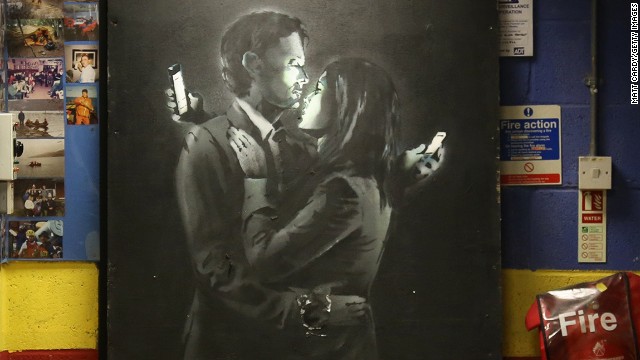
By now, it's almost inevitable that you've heard of the street artist named Banksy. Whether just from reading this blog, or your own personal interest in his work, it's impossible to deny the fact that he has been one of the major driving forces behind the acceptance of street art into the world of high culture. After getting a start 20 years ago in Bristol, UK, Banksy has since graced some of the world's leading art galleries and auction houses with his work, all while maintaining a sly sense of notoriety - though whether or not this can be considered more than a marketing ploy at this point is up for debate.
One of the most interesting consequences of his style of work, however, is the question of ownership. If a kid with a spray can and a stencil creates a piece of work, typically it's either ignored, or eventually removed by a town council's anti-graffiti group. When the artist behind a stenciled piece is an internationally renowned figure, however, people start to sit up and take notice.
But who owns the piece? If Banksy had created his work on canvas he bought, naturally he would be considered the owner by copyright law. But considering that he uses real property that belongs to someone else (and without their consent), does the piece automatically become the property of the owner of the building or structure that acts as canvas?
This question was recently highlighted by a Banksy piece that appeared on the wall of a community centre in Bristol, back where the phenom got his start. The piece, which was apparently titled 'Mobile Lovers', was initially released in an Instagram photo, which fans finally tracked down to the Broad Plain Boys youth centre using digital sleuthing techniques that included Google Street View.
Within a few hours of the piece being properly discovered, however, members of the youth centre had removed it from the wall with a crowbar and set it up inside. While they are allowing anyone free access to view the piece, they are requesting a voluntary donation to help keep the centre up and running.
It will be interesting to see what they plan to do with the piece in the long term, as Banksy originals have been fetching large sums of money at auction houses all over the world - although there may be some complex legal implications if they do attempt to auction the piece.
Posted on May 02nd 2014 on 05:23pm
0 Comments
Wednesday 30th April 2014Online Art Sales Don't Threaten the Offline Art World

Much has been made of the e-commerce revolution, and with good reason. It has completely changed the way we interact with businesses, whether they are retail stores or service providers or any other kind of business. But one of the downsides to the widespread adoption of e-commerce has been the way that it has negatively impacted stores in the physical world, so-called 'brick and mortar' stores (as opposed to digital storefronts, aka websites). Stores have been closing doors left and right as they struggle to stay afloat in a tricky economy, especially when it's so much cheaper to move an entire business online in order to save money.
While it's taken certain areas of the retail economy more time to move towards a digital marketplace, the art world is no exception. It's now possible to buy prints from thousands of different online stores, and as you've probably learned from your Gallereo page, it's equally easy for individual artists to begin to make a name for themselves with a little bit of digital know-how and some sales talent.
Interestingly, though, instead of online art sales replacing the traditional offline world of galleries and auction houses, it appears that both sales channels are able to operate side by side with a minimum of interference. According to a report released this week by British insurer Hiscox, online fine art sales are going to more than double in the next five years, reaching an impressive $3.76 billion USD, up from its 2013 market value of $1.57 billion USD.
The reason the two markets don't collide, according to Robert Read, head of fine art at Hiscox, is “Young collectors are looking for artwork which is easy to buy and available at a wide range of prices," and when that fact is coupled with the comfort level of younger generations when it comes to making online purchases, there is a whole new market being created. So rather than supplanting the world of auction houses, the online art market should rather be considered an expansion of the art market as a whole, which makes it relatively unique in terms of the e-commerce world.
"The findings indicate that online art e-commerce will not exist as a separate entity – it will augment and co-exist with what is happening in the real, physical art world," Hiscox said.
So digital artists, take heart! Your prospects only stand to grow in the coming years, so make sure that you read up on all the best tips and tricks to ensure your digital sales success!
Posted on April 30th 2014 on 11:33pm
0 Comments
Wednesday 30th April 2014Artist Spotlight: Jeff Koons
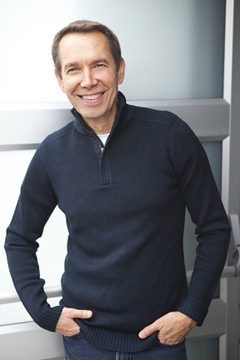
In this new series of posts, we're going to take a look at some of the dichotomies of the art world: the most influential artists and the rising stars, the well-known and the unknown, the sought-after and the reviled. Sometimes, as in the case of this week's post, it will be up to you to decide which categories the artist falls into. Jeff Koons is a very polarizing force in the contemporary art community for a number of reasons, but his staying power and his influence cannot be denied. As we discussed in a previous post, Koons currently holds the world record for highest auction price attained for a work by a living artist, when 'Balloon Dog (Orange)' sold recently for over $37 million USD.
Koons tends to work in a series modality, creating a number of works in a specific series as he explores various themes related to the series. The Balloon Dog sculptures, for instance, belong to a series he calls 'Celebration'. It's one of his most well-known series, largely because of the headline grabbing sums of money attached to the sale of the pieces. They feature a variety of large sculptures executed in colourized, highly reflective stainless steel.
The really interesting thing about Koons' work, though, at least in this writer's opinion, is the way he deals with criticism and with meaning. He claims that his works have no hidden meanings, that there is no sly satirical laughing up his sleeve at the modern art establishment, and yet that's exactly how many critics seem to view his work. This is probably at least partially informed by the way in which many of his pieces are constructed. Perhaps taking a leaf out of Andy Warhol's Factory book, Koons developed a 'colour-by-numbers' system that allowed his legions of assistants (over 100 at the latest count) to produce his works while staying true to his original vision, as though they were created "by a single hand".
"I think art takes you outside yourself, takes you past yourself. I believe that my journey has really been to remove my own anxiety. That's the key. The more anxiety you can remove, the more free you are to make that gesture, whatever the gesture is. The dialogue is first with the artist, but then it goes outward, and is shared with other people. And if the anxiety is removed everything is so close, everything is available, and it's just this little bit of confidence, or trust, that people have to delve into."
An interesting idea, but at least at the moment, it seems like he's removed so much anxiety by not actually being involved in the production process of any of his work. In this critic's opinion, it's something of a cop-out.
Posted on April 30th 2014 on 10:35pm
0 Comments
Wednesday 30th April 2014But Does Money Make It Art?
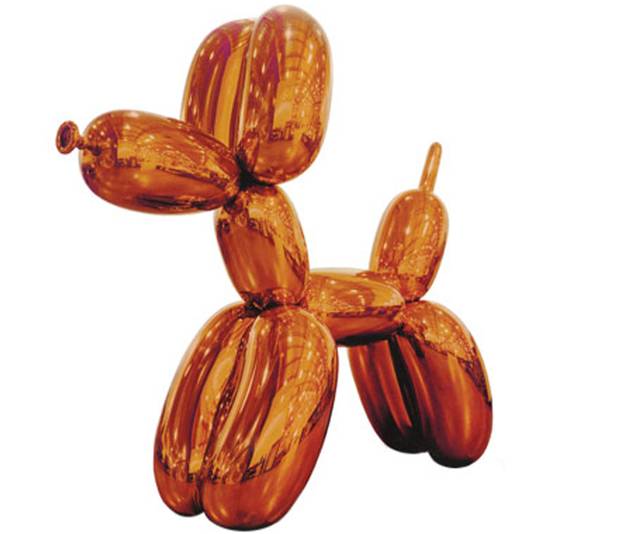
Ever since Marcel Duchamps stuck a urinal in a gallery, scrawled some initials on it, and called it art, people have been in turn baffled and amazed by the often bizarre world of modern art. For a while, collectors were content to be simply bemused by this emerging trend, if they were feeling charitable, and otherwise, regarding the rise of modern art as a fad not worthy of their valuable currency. The traditional art world rolled on, and the amounts of money that began to be paid for classical works eventually began to reach stratospheric levels. Almost all of the most expensive paintings ever sold were auctioned in the last 20 or 30 years, with the current record holder for highest auction price held by 'The Card Players' by Paul Cezanne, which was sold for an astonishing $269.4 million USD in 2011.
A curious fact about these incredibly valuable works, of course, is that the artist never saw a dime of these prices, largely because they are only able to command such prices posthumously. With the go go go world of modern art, however, this has all begun to change. Gerhard Richter, a German born artist, set the world record for a piece sold by a living artist with his painting Abstraktes Bild, which sold for $34 million USD in 2011. He then smashed his own record a scant 2 years later in 2013, when his piece Domplatz, Mailand was sold for $37 million. These are incredible figures for a still-living artist - or at least, they were until the tail end of 2013.
Jeff Koon's 'Balloon Dog (Orange)', shown above, is now the world record holder for the highest auction price for a work by a living artist, at a truly incredible $58.4 million USD via Christie's auction house in New York City. According to Christie's, "the work is considered the supreme example from Koon’s highly desired and acclaimed Celebration Series, begun in the early 1990s. The series evolved from Koons's desire to recreate the ecstatic experiences of a child's enjoyment of the world with universal signifiers."
This seems like something of a far-flung sentiment for a stainless steel representation of a balloon animal. Far be it for this writer to question the erudite minds at Christie's, but as they exist entirely to turn a profit, one is left wondering '… but is it art?'
Posted on April 30th 2014 on 08:42pm
0 Comments
Friday 25th April 2014Never Before Seen Digital Works by Warhol Recovered
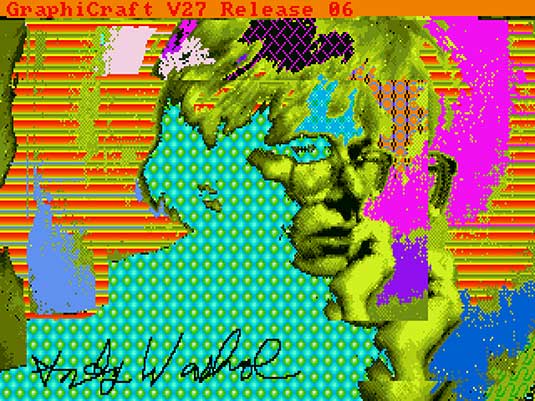
Perhaps the most dreaded scourge of the digital artist is data loss. Unless you manage to regularly maintain a strict backup schedule to keep copies of all your digital work files in separate places (and let's be honest - that's right up there with flossing every day and jogging 4 times a week) you have probably encountered the problem before. But what happens when you diligently back up your work, only to have the storage medium you used go out of style? Imagine being a filmmaker who has copies of all their work on BetaMax tapes. Well, the same thing apparently happened to works by pioneering pop art icon Andy Warhol.
Originally commissioned in 1985 by then-thriving computer company Commodore to create a series of works using their computer graphics software, Warhol produced a number of images using a now-hilariously antiquated program named GraphiCraft, which was never the less the pinnacle of computer graphics technology at the time. Out of the whole series he created, only one piece was ever used in a real-world setting, a picture of artist Debbie Harry. All the rest of the images were saved to floppy disks, and left to gather dust and be forgotten in some back corner of Warhol's studio.
After the artist's death, however, the disks were part of a collection that was donated to The Warhol, a museum in Pittsburgh dedicated to all things Andy Warhol, part of the Carnegie Museums collection. However, by this time, Commodore was going bankrupt, and the museum had little technical knowledge that would have allowed them to access the content of the disks - and, not knowing was contained on them, they had little incentive to find out.
Fast forward to 2014, when Cory Arcangel saw a Youtube video of Warhol promoting the Amiga 1000, which inspired him to reach out to the museum to find out what happened to his experiments with the first computer graphics systems. The result was a collaboration between The Warhol's chief archivist, Matt Wrbican, and a group of computer enthusiasts from Carnegie Mellon University, the CMU Computer Club. Thanks to the expertise of the CMU Computer Club, the images were able to be recovered after painstaking tests and careful problem solving. For those of you who've read our recent post on drawing tablets, you'll be easily able to see how even the most capable artists would have struggled to adapt to the mouse interface that was standard issue on most computer systems at the time!
Posted on April 25th 2014 on 10:55pm
0 Comments
Wednesday 16th April 2014Foregoing Photoshop: The Work of JeeYoung Lee
Perhaps the strangest result of the era of digital imagery is the effect it has had on the photograph. When photography was originally developed, it was easily the most precise of the possible methods to reproduce a particular object or scene with near-scientific accuracy. There were still ways to manipulate perception of the image, and even some fairly sophisticated optical illusions, but for the most part, photographs were regarded as reliable documentation, free of the artist license inherently given to painters and other artists. All this would change.
Enter the world of the digital photograph. With even the most basic training in Photoshop or similar image editing programs, the average person is capable of creating a photographic composite that is a complete fabrication, all while looking real. This creates an interesting blurring of the lines between photography and painting, since painting with pixels that look photo-realistic is still painting. As a result, some artists have expressed a deep frustration with the ease of creation of fantastical landscapes and scenes.
One such artist is JeeYoung Lee, who works out of a small studio in Seoul, South Korea. The studio really is small, measuring just 3 x 6 meters, but the scenes she constructs within it are anything but. Instead of using Photoshop and other digital methods to create her fantastical works, she takes the time to actually construct the scenes in her studio by hand. Some of the results are more successful than others, but the ones that do succeed are truly incredible, and are made even more so by her talented handicraft.
In a world of ersatz people where everyone and everything is airbrushed to within an inch of its life, it's refreshing to see a talented artist deliberately defying the conventions of a digitally fabricated reality in favour of actual construction. As both artist, photographer, set designer and model, Lee has a degree of intimacy in her photography that isn't always apparent in the works of others, and the fact that many of her scenes are depictions of her life, whether memories of childhood or dreams of fear, only serves to reinforce the personally cathartic nature of her work. Regardless of your opinion of her current pieces, she's definitely an emerging talent that should be watched closely as she develops, sans Photoshop.
To see a gallery of some of Lee's most popular works, check out the selection
here.
Image shown above is 'Treasure Hunt', by JeeYoung Lee.
Posted on April 16th 2014 on 06:28pm
0 Comments
Friday 11th April 2014The Best Cities for Art Lovers 8: Seattle

When most people think of Seattle, they think of beautiful forests, the Space Needle, and the birthplace of the Starbucks coffee franchise. If they're a bit older, they might think of famous bands that rose out of the grunge music scene in the early 1990s (Nirvana, anyone?). But the Pacific Northwest has been home to great artists for hundreds, if not thousands of years, as the huge number of galleries in Seattle and the surrounding area show. If 'thousands of years' throws you off, then you're forgetting the fact that various Native tribes have inhabited the Pacific Northwest long before Europeans ever showed up. Fortunately, a number of artifacts that might otherwise have been lost have been preserved in an impressive showcase of Native artwork found in galleries throughout the region.
Seattle itself is home to several world-class art galleries, chief among which is the Seattle Art Museum, or 'SAM' as it is affectionately known. Interestingly, the museum's collection is rather light on the traditional European works that many of us are used to encountering in art galleries, despite having a large collection overall. This gap in their repertoire tends to be filled by temporary travelling exhibitions, which makes for an interesting experience no matter when you happen to visit, but the regular collection contains an impressive array of Native artwork.
One of the museum's Matisse paintings was subject of quite the controversy in the late 1990s, when it came to light that the piece had actually been looted by the Nazis during World War II and sold to the museum under false pretenses by a gallery, who they later successfully sued. This may partially explain their aversion to classical European works, but the result is a pleasantly different gallery experience.
One of the SAM's satellite galleries, the Seattle Asian Art Museum, now housed in the old SAM building, features a number of beautiful collections from all throughout Asia, ranging from Chinese pottery to Indian portraiture to Thai statuary, with a nice blend of works by contemporary Asian artists as well. Perhaps unique in North America, there is also an extensive collection of artwork by Australian aboriginal peoples.
If these galleries don't appeal, the natural beauty of Seattle and its vibrant artistic traditions have called a huge number of artists to the city, and a number of commercial galleries have sprung up in response to the demand. A huge number of them are concentrated in an area of the city known as Pioneer Square, cheek to jowl with a number of small artists studios which are also occasionally open to the public.
Posted on April 11th 2014 on 03:30pm
0 Comments
Tuesday 08th April 2014Drawing Tablets
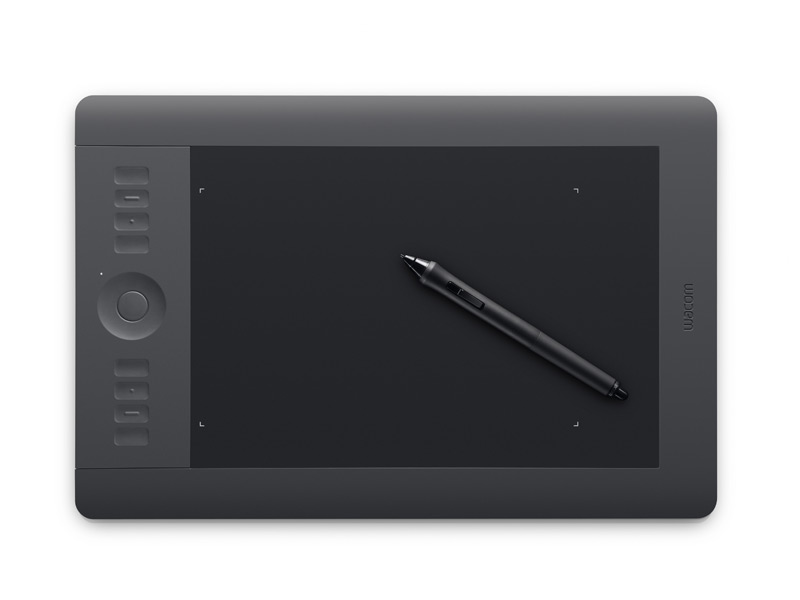
Ever since the first days of computer graphics programs, when Andy Warhol and his contemporaries were just beginning to dip a toe into the pool that would become the wonderful world of digital art, people have struggled with input devices. The mouse, invented by Doug Engelbart, is a great device for using programs and generally interacting with a graphical user interface, but it really starts to fall down on the job when it comes to the type of precise, artistic movements that artists demand in their work. Enter the drawing tablet, stage left.
The first drawing tablet for home use was designed for the Apple II and its generation, and was known as the KoalaPad. In 1984, a reviewer in Byte magazine (one of the biggest home computing magazines of the day) was rather unimpressed with the capabilities of the technology, and said that he found he had better luck using a mouse. Those days are long gone.
For any serious digital artist, a drawing tablet is a must in today's digital world. The technology has progressed to a point where there is no way that a mouse can provide the level of control that a drawing tablet offers. Even the most basic tablets in today's market provide pixel-perfect positional control, and most (if not all) also provide some level of pressure sensitivity, allowing you an additional degree of input control. The more advanced (and thus more expensive) tablets have additional degrees of sensitivity, and many of them are even capable of detecting the angle at which the stylus is held, for a third level of input control. If you're a truly serious artist, or if you just like to have all the best equipment, it's even possible to purchase a drawing tablet that is directly integrated with a tablet computer and its screen, meaning that you can run your applications directly on the tablet, and draw right on the screen for perfect accuracy. The downside to this power, naturally, is that they are incredibly expensive.
Whether you're hoping to explore the world of digital painting (the "undo" command makes it much more accessible for beginners), or doing regular retouching work in Photoshop, a drawing tablet will completely change the way you interact with your computer. Smaller tablets can be purchased for under £100, so there's no longer any excuse to avoid having one! If you're still not sure, many shops have demo models available for customers to test, so give it a shot, and see what you're missing!
Posted on April 08th 2014 on 01:30pm
0 Comments
 For many artists working in the various digital media, there is one thing they can't live without - a good computer! For some people, a laptop offers the best balance of portability and power, but in many cases a laptop can't provide the raw power necessary for working with extremely large and complex files. This leaves them with the choice among desktop computers, which tend to offer a great deal of flexibility and customisability, as well as the capacity for truly impressive computing power. For a digital artist, one of the most important choices in a computer setup is the monitor.
For many artists working in the various digital media, there is one thing they can't live without - a good computer! For some people, a laptop offers the best balance of portability and power, but in many cases a laptop can't provide the raw power necessary for working with extremely large and complex files. This leaves them with the choice among desktop computers, which tend to offer a great deal of flexibility and customisability, as well as the capacity for truly impressive computing power. For a digital artist, one of the most important choices in a computer setup is the monitor. Some time, at some point in their lives or their artistic careers (or both), everyone asks themselves, "What's the point of art?" Whether it's in a moment of frustration at a creative block or a depression after an unfortunate gallery turnout or just an idle moment of procrastination in the studio, the question has probably crossed your mind. Art critics tend to be willing to comment about individual pieces and individual artists, but it's a much more complicated topic to look at art as whole.
Some time, at some point in their lives or their artistic careers (or both), everyone asks themselves, "What's the point of art?" Whether it's in a moment of frustration at a creative block or a depression after an unfortunate gallery turnout or just an idle moment of procrastination in the studio, the question has probably crossed your mind. Art critics tend to be willing to comment about individual pieces and individual artists, but it's a much more complicated topic to look at art as whole. By now, it's almost inevitable that you've heard of the street artist named Banksy. Whether just from reading this blog, or your own personal interest in his work, it's impossible to deny the fact that he has been one of the major driving forces behind the acceptance of street art into the world of high culture. After getting a start 20 years ago in Bristol, UK, Banksy has since graced some of the world's leading art galleries and auction houses with his work, all while maintaining a sly sense of notoriety - though whether or not this can be considered more than a marketing ploy at this point is up for debate.
By now, it's almost inevitable that you've heard of the street artist named Banksy. Whether just from reading this blog, or your own personal interest in his work, it's impossible to deny the fact that he has been one of the major driving forces behind the acceptance of street art into the world of high culture. After getting a start 20 years ago in Bristol, UK, Banksy has since graced some of the world's leading art galleries and auction houses with his work, all while maintaining a sly sense of notoriety - though whether or not this can be considered more than a marketing ploy at this point is up for debate. Much has been made of the e-commerce revolution, and with good reason. It has completely changed the way we interact with businesses, whether they are retail stores or service providers or any other kind of business. But one of the downsides to the widespread adoption of e-commerce has been the way that it has negatively impacted stores in the physical world, so-called 'brick and mortar' stores (as opposed to digital storefronts, aka websites). Stores have been closing doors left and right as they struggle to stay afloat in a tricky economy, especially when it's so much cheaper to move an entire business online in order to save money.
Much has been made of the e-commerce revolution, and with good reason. It has completely changed the way we interact with businesses, whether they are retail stores or service providers or any other kind of business. But one of the downsides to the widespread adoption of e-commerce has been the way that it has negatively impacted stores in the physical world, so-called 'brick and mortar' stores (as opposed to digital storefronts, aka websites). Stores have been closing doors left and right as they struggle to stay afloat in a tricky economy, especially when it's so much cheaper to move an entire business online in order to save money. In this new series of posts, we're going to take a look at some of the dichotomies of the art world: the most influential artists and the rising stars, the well-known and the unknown, the sought-after and the reviled. Sometimes, as in the case of this week's post, it will be up to you to decide which categories the artist falls into. Jeff Koons is a very polarizing force in the contemporary art community for a number of reasons, but his staying power and his influence cannot be denied. As we discussed in a previous post, Koons currently holds the world record for highest auction price attained for a work by a living artist, when 'Balloon Dog (Orange)' sold recently for over $37 million USD.
In this new series of posts, we're going to take a look at some of the dichotomies of the art world: the most influential artists and the rising stars, the well-known and the unknown, the sought-after and the reviled. Sometimes, as in the case of this week's post, it will be up to you to decide which categories the artist falls into. Jeff Koons is a very polarizing force in the contemporary art community for a number of reasons, but his staying power and his influence cannot be denied. As we discussed in a previous post, Koons currently holds the world record for highest auction price attained for a work by a living artist, when 'Balloon Dog (Orange)' sold recently for over $37 million USD. Ever since Marcel Duchamps stuck a urinal in a gallery, scrawled some initials on it, and called it art, people have been in turn baffled and amazed by the often bizarre world of modern art. For a while, collectors were content to be simply bemused by this emerging trend, if they were feeling charitable, and otherwise, regarding the rise of modern art as a fad not worthy of their valuable currency. The traditional art world rolled on, and the amounts of money that began to be paid for classical works eventually began to reach stratospheric levels. Almost all of the most expensive paintings ever sold were auctioned in the last 20 or 30 years, with the current record holder for highest auction price held by 'The Card Players' by Paul Cezanne, which was sold for an astonishing $269.4 million USD in 2011.
Ever since Marcel Duchamps stuck a urinal in a gallery, scrawled some initials on it, and called it art, people have been in turn baffled and amazed by the often bizarre world of modern art. For a while, collectors were content to be simply bemused by this emerging trend, if they were feeling charitable, and otherwise, regarding the rise of modern art as a fad not worthy of their valuable currency. The traditional art world rolled on, and the amounts of money that began to be paid for classical works eventually began to reach stratospheric levels. Almost all of the most expensive paintings ever sold were auctioned in the last 20 or 30 years, with the current record holder for highest auction price held by 'The Card Players' by Paul Cezanne, which was sold for an astonishing $269.4 million USD in 2011. Perhaps the most dreaded scourge of the digital artist is data loss. Unless you manage to regularly maintain a strict backup schedule to keep copies of all your digital work files in separate places (and let's be honest - that's right up there with flossing every day and jogging 4 times a week) you have probably encountered the problem before. But what happens when you diligently back up your work, only to have the storage medium you used go out of style? Imagine being a filmmaker who has copies of all their work on BetaMax tapes. Well, the same thing apparently happened to works by pioneering pop art icon Andy Warhol.
Perhaps the most dreaded scourge of the digital artist is data loss. Unless you manage to regularly maintain a strict backup schedule to keep copies of all your digital work files in separate places (and let's be honest - that's right up there with flossing every day and jogging 4 times a week) you have probably encountered the problem before. But what happens when you diligently back up your work, only to have the storage medium you used go out of style? Imagine being a filmmaker who has copies of all their work on BetaMax tapes. Well, the same thing apparently happened to works by pioneering pop art icon Andy Warhol.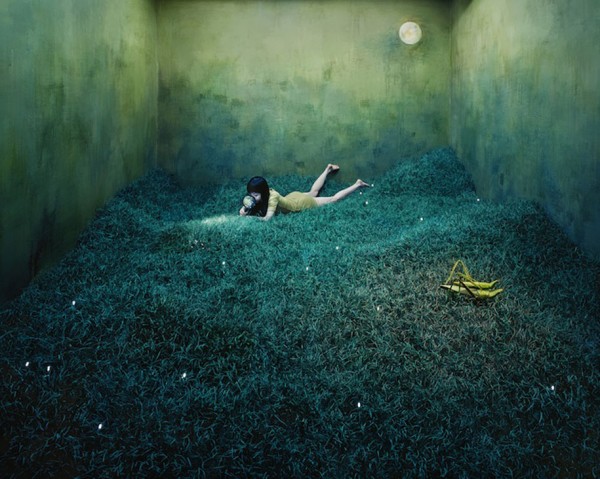
 When most people think of Seattle, they think of beautiful forests, the Space Needle, and the birthplace of the Starbucks coffee franchise. If they're a bit older, they might think of famous bands that rose out of the grunge music scene in the early 1990s (Nirvana, anyone?). But the Pacific Northwest has been home to great artists for hundreds, if not thousands of years, as the huge number of galleries in Seattle and the surrounding area show. If 'thousands of years' throws you off, then you're forgetting the fact that various Native tribes have inhabited the Pacific Northwest long before Europeans ever showed up. Fortunately, a number of artifacts that might otherwise have been lost have been preserved in an impressive showcase of Native artwork found in galleries throughout the region.
When most people think of Seattle, they think of beautiful forests, the Space Needle, and the birthplace of the Starbucks coffee franchise. If they're a bit older, they might think of famous bands that rose out of the grunge music scene in the early 1990s (Nirvana, anyone?). But the Pacific Northwest has been home to great artists for hundreds, if not thousands of years, as the huge number of galleries in Seattle and the surrounding area show. If 'thousands of years' throws you off, then you're forgetting the fact that various Native tribes have inhabited the Pacific Northwest long before Europeans ever showed up. Fortunately, a number of artifacts that might otherwise have been lost have been preserved in an impressive showcase of Native artwork found in galleries throughout the region. Ever since the first days of computer graphics programs, when Andy Warhol and his contemporaries were just beginning to dip a toe into the pool that would become the wonderful world of digital art, people have struggled with input devices. The mouse, invented by Doug Engelbart, is a great device for using programs and generally interacting with a graphical user interface, but it really starts to fall down on the job when it comes to the type of precise, artistic movements that artists demand in their work. Enter the drawing tablet, stage left.
Ever since the first days of computer graphics programs, when Andy Warhol and his contemporaries were just beginning to dip a toe into the pool that would become the wonderful world of digital art, people have struggled with input devices. The mouse, invented by Doug Engelbart, is a great device for using programs and generally interacting with a graphical user interface, but it really starts to fall down on the job when it comes to the type of precise, artistic movements that artists demand in their work. Enter the drawing tablet, stage left.



